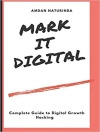Low cost competitors, who offer “good enough” products and services at very attractive prices, are currently significantly impacting the businesses of many leading companies, and some are starting to “move up” to challenge the traditional companies in their core markets. It’s only a matter of time before most companies will feel the pressure from these aggressive, cut-price competitors.
Beating Low Cost Competition offers a step–by–step structured approach to help executives in traditional companies with premium brands think through the options for responding to their low cost rivals and select the most appropriate strategy to win in their chosen markets.
By examining a wide-ranging group of companies from around the world, Adrian Ryans provides numerous examples of how different companies in different industries have responded to low cost competitors and analyses the effectiveness of their strategies. He also discusses the leadership and cultural challenges that many companies are facing as they take steps to respond to their low cost rivals.
Ultimately, the insights gained from this book will lead to better and more profitable business decisions.
Adrian Ryans is Professor of Marketing and Strategy at IMD, Lausanne, Switzerland. He has designed and taught on executive programs for organizations in North America, Europe, Australia and Asia, including GE, Bank of Montreal, Medtronic, Deloitte, Borealis, Saurer, Vestas, IBM, Boeing, National Semiconductor, Bio Ware, ASML, Holcim, Varian, Hoechst, Amgen, Fluke, LSI Logic, Hutchison Port Holdings and Qualcomm. He has also acted as a consultant for a number of leading global corporations.
قائمة المحتويات
Contents
Preface
Acknowledgments
1 The Growing Challenge from Low Cost Competitors
The Challenge is Real and It is Here to Stay
Retailing
Airlines
Banking
Fast-moving consumer goods
Consumer electronics
Business-to-business products and services
In Many Industries the Major Threat is Coming from Asia
Many Customers Prefer Good Enough Products and Services
Low Cost Competition Is Not All Bad News
Understanding and Responding to the Challenge of Low Cost Competition
2 Why the Threat from Low Cost Competition is Intensifying
Value Propositions Have Three Core Elements
Performance value
Price value
Relational value
One core value proposition is usually emphasized
The relative size of the different value segments may evolve over time
Product category life cycles are getting shorter
The Traditional Integrated Business Model is Disintegrating
Three core processes underpin any business
Giving balanced attention to all three core processes can lead to conflict
Companies are leveraging the specialized players
Companies with focused business models are playing a much bigger role in many industries
Many more companies are opening their business models
But there are significant risks in relying more on strategic partners
Total solution coordinators are helping some companies leverage these networks
Growing Support for Low Cost Competitors
Low cost entrants sometimes have powerful supporters
Customers are increasingly willing to buy from low cost players
Challenge Questions
3 Understanding How Low Cost Competitors Play the Game
Ryanair
Performance has been outstanding
Value proposition is crystal clear
Business model is innovative and focused
Extreme focus on cost control
Created a virtuous cycle
So far . . . so good
ING DIRECT USA
Borrowed with pride
Appealing value proposition
Early success
Competition finally responds and ING DIRECT raises the stakes
Learning from Low Cost Competitors
Question every element of the traditional business model
Have very simple and straightforward value propositions
Avoid complexity at any cost
Break through the communication clutter
Be a cost innovator
Remember that the customer is not always right
Have the courage to drop prices significantly below competition
Traditional Players Can Learn from Low Cost Competitors
Challenge Questions
4 Realistically Assessing the Threat
Some Industries Are Less Vulnerable to the Low Cost Threat
Why Companies Fail to Respond to the Low Cost Threat in a Timely Manner
The low cost threat is underestimated
The low cost threat often takes time to gain momentum
Sometimes it is the second-order effects that have the biggest impact
Realistically Assessing the Threat … and the Opportunity
“Beat my business” exercises can be a useful tool
Identifying actual and potential low cost competitors is key
Understanding what is driving the strategy of the low cost competitors
Core capabilities, distinctive resources and major gaps are often key drivers of a low cost competitor’s strategy
Low cost competitors can overcome critical gaps in creative ways
How might a low cost competitor significantly enhance its position?
Low cost competitors often follow similar strategies to improve their position
It is a challenge to anticipate the moves of unconventional competitors
Most Business Models Have Limited Reach
Developing a Worst Case Scenario Can Provide a “Burning Platform”
Framing the Financial Analysis as a Comparison of Two Futures is Critical
Challenge Questions
5 Confronting Low Cost Competitors in the Price Value Segment of the Market
Competing at All Levels in the Market is Usually Not Necessary
The Challenge Decision Requires Thinking Through Many Issues
Arguments for Entering the Price Value Segment
“Good enough” products can meet a real market need
Opportunity to engage price value customers and develop better solutions to their needs over time
Opportunity to grow with customer as their strategies evolve
May provide an opportunity for “up-selling”
Gives traditional players some “control” over low cost competitors
Arguments For Not Entering the Price Value Segment
Conflicts with the traditional value proposition of the business
Encourages cannibalization of high-end products
Lacks resources and capabilities to successfully compete
Value Chain Members Can Impact Decisions
An Alternative Way to Provide a Price Value Solution to the Market
Making the Decision in a Timely Manner
Should the Price Value Business Be Independent?
Integration has several potential advantages
Advantages of independence often outweigh the advantages of integration
Some Major Tactical Decisions
Make versus buy
Brand choice is a critical decision
Developing new sales and distribution channels is often necessary
Need to evolve channels over time
Nokia Developed a Strong Position in the Entry Mobile Phone Segment
Local Chinese competitors emerged quickly
Nokia responded rapidly to the threat
Nokia’s results to date in the entry-level business have been very good
Dow Corning Decided to Compete Aggressively for Price Seeking Customers
Dow Corning faced a very tough situation in 2000
Dow Corning launched a new business unit
And the strategy seemed to work well
Aer Lingus Played a Price Value Game in a Different Segment
Competing in Ryanair’s home market
A difficult balancing act between cost cutting and differentiation
Some initial successes but is it sustainable?
Challenge Questions
6 Avoiding Head-to-Head Competition with Low Cost Competitors by Playing a Different Game
Enhancing Performance Value
Electrolux was not well positioned for the emerging market environment
Electrolux responded to the challenge on multiple fronts
Electrolux has made some progress but the challenges still loom large
Maintaining Performance Leadership is a Challenge Today
Rising costs and shortening windows represent a significant issue
Using open business models can help
Performance value leadership requires constant innovation
Getting beyond the strategic breakpoint can create real competitive advantage
Stressing Relational Value
Orica was facing total commoditization of its core products
Orica began moving toward providing solutions for its customers
Orica leveraged its global leadership position to stay ahead
Tesco built relational value in a mass-market
Tesco combated the threat of the hard discounters by creating customer value
Tesco also managed its costs very effectively
Tesco is the clear leader in the UK and expanding aggressively into new markets
Challenge Questions
7 The Leadership Challenge
Compaq Failed to Make a Successful Transition
Meeting the Challenge of Low Cost Competition Often Requires a Corporate Transformation
Numbers can support the need for change
Building and Managing a Successful Price Value Business
Product and service design challenge
Marketing, sales and distribution challenge
The cost control challenge
Creating and Managing a Relational Value Business
Designing an organization that will encourage building relational value
Developing and using deep customer and market knowledge
Inculcating a customer focused culture throughout the organization
Building relational value is not a quick fix
Challenge Questions
8 An Even More Challenging Future
Cost Innovation Must be Part of Everybody’s Game
The Threat From Low Cost Competition Will Intensify
Traditional Companies Can Leverage Networks to Try to Stay Ahead
Low Cost Competitors Face Their Own Challenges
Anticipate Possible Future Competitive Moves and Proact
Be Willing to Re-think Traditional Business Wisdom
Put the Customer on Center Stage
References
Index
عن المؤلف
Adrian Ryans is Professor of Marketing and Strategy at IMD, Lausanne, Switzerland. He has designed and taught on executive programs for organizations in North America, Europe, Australia and Asia, including GE, Bank of Montreal, Medtronic, Deloitte, Borealis, Saurer, Vestas, IBM, Boeing, National Semiconductor, Bio Ware, ASML, Holcim, Varian, Hoechst, Amgen, Fluke, LSI Logic, Hutchison Port Holdings and Qualcomm. He has also acted as a consultant for a number of leading global corporations.












